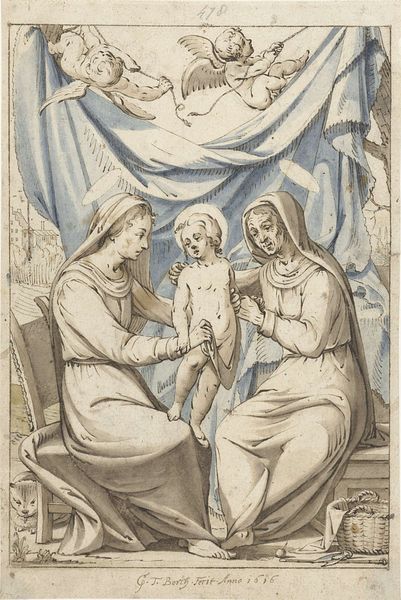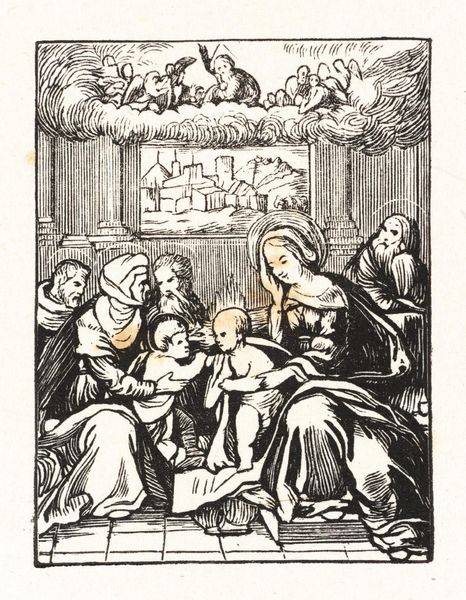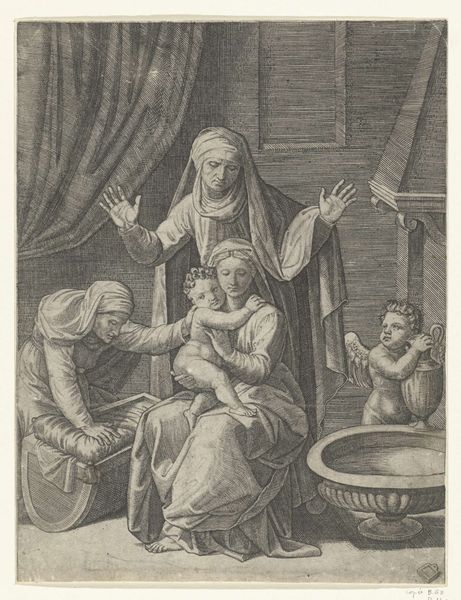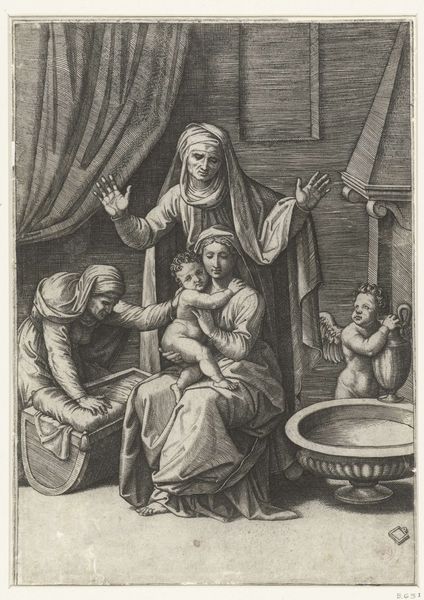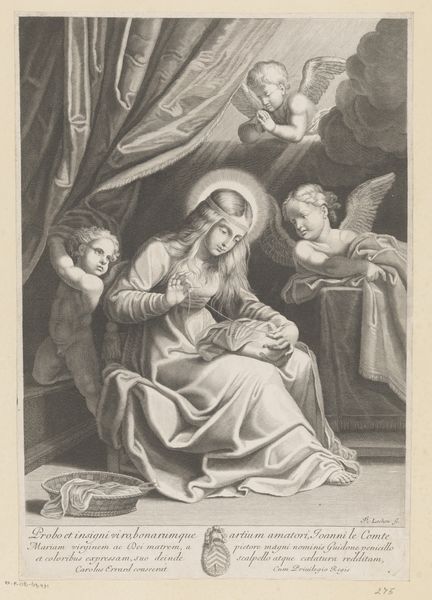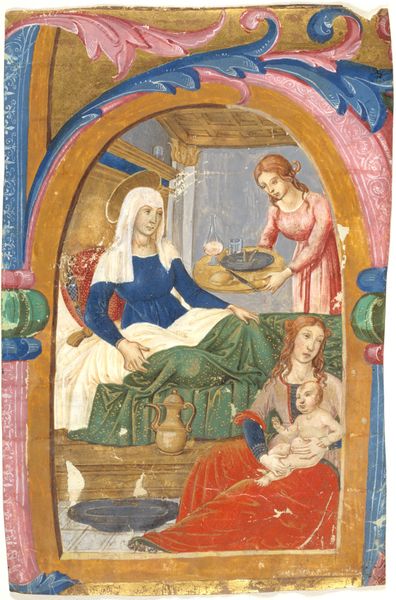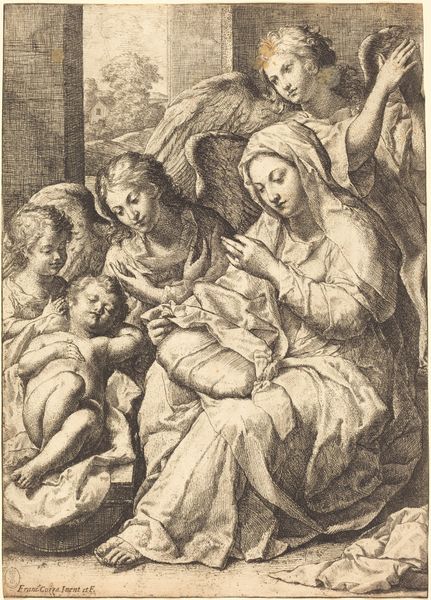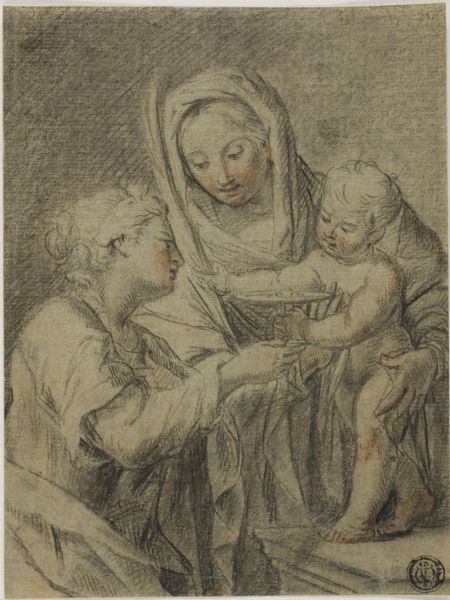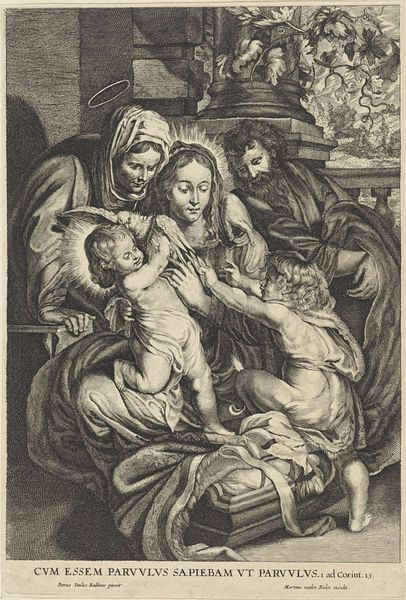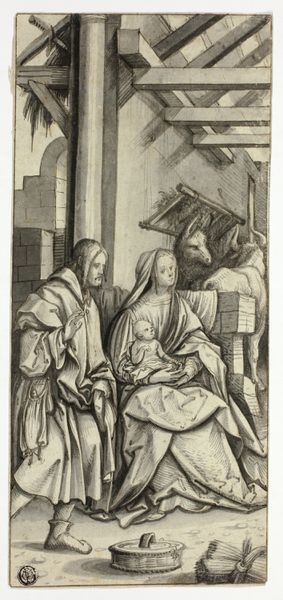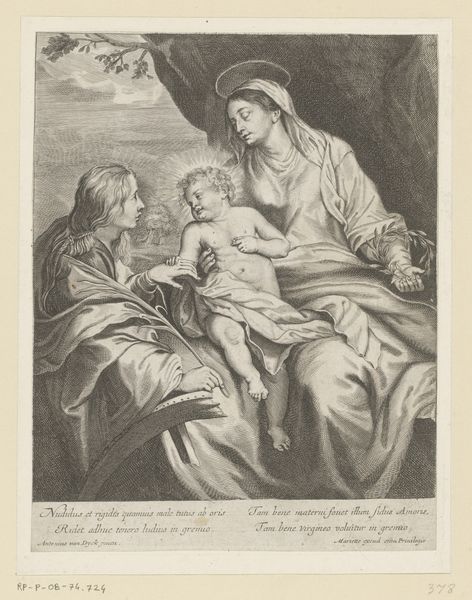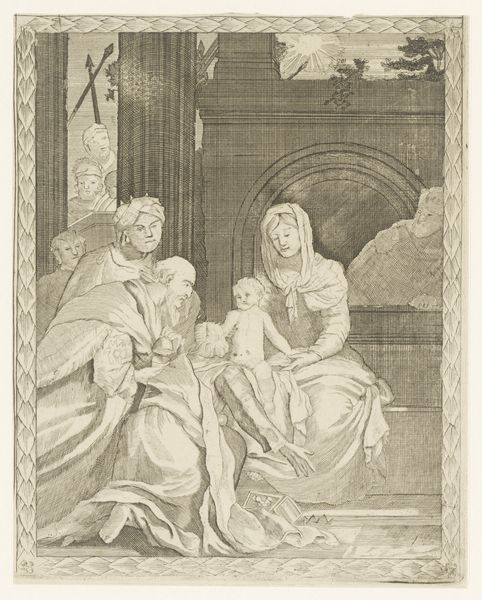
drawing, painting, paper, watercolor
#
portrait
#
drawing
#
narrative-art
#
painting
#
paper
#
11_renaissance
#
watercolor
#
intimism
#
coloured pencil
#
watercolour illustration
#
history-painting
#
academic-art
#
miniature
Dimensions: height 313 mm, width 204 mm
Copyright: Rijks Museum: Open Domain
Curator: Madonna and Child with Saint Anne, dating from around 1653 and attributed to Gesina ter Borch. The artwork currently resides here at the Rijksmuseum. Editor: It strikes me as quite intimate, despite the grand religious theme. The watercolor illustration is presented on paper, lending it an immediacy – as though we're peering into a private moment. Curator: The artist, Gesina ter Borch, was a skilled amateur. Given that context, this isn't merely a devotional image. It's a product of its social context and gender, reflecting the artistic practices available to women of her status. Her access to materials would’ve been different to men and this work has more decorative qualities of colour, and even form that might be described as more ornamental. Editor: I appreciate your pointing that out. I agree, the ornamentation elevates the presentation but my eyes are drawn to the gentle disposition of each figure, that the figures aren’t heavily outlined. There's such fluidity in the drapery, rendered in these soft watercolour washes that help blend each individual. Notice also, how she renders the halos of the holy figures? Curator: Yes, the execution, likely with coloured pencil or watercolour, displays considerable skill, it could even be termed sophisticated. There's definitely that domestic element that makes us see it as intimate as the use of watercolour illustration adds a degree of separation from grand commissions and public viewership. That the making becomes the thing – craftwork elevated into the artistic, reflecting contemporary tastes and challenging existing hierarchies of artwork types. Editor: Absolutely, the informality adds to its charm and unique texture that this specific artist brings to her artworks. I mean how cleverly does the fabric act as both drapery but also the surface from which those two putti appear. Curator: We gain valuable insights into the daily lives and artistic production of women during the Dutch Golden Age by examining the materiality and processes. Editor: Agreed! The use of humble materials for a traditionally grandiose subject matter contributes to the overall viewing pleasure here and offers a lens of humanity within these intimate scenes of holiness. Thanks to close observation of how it reflects both intimacy and craftsmanship.
Comments
No comments
Be the first to comment and join the conversation on the ultimate creative platform.
